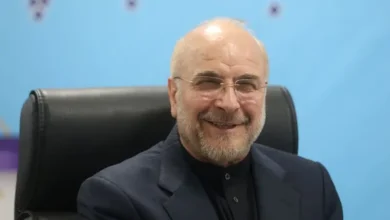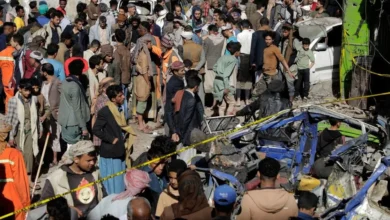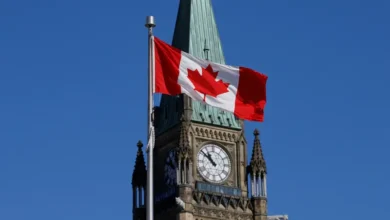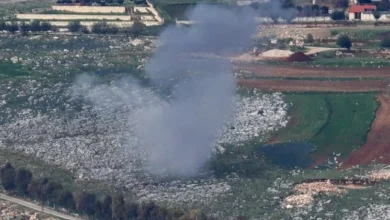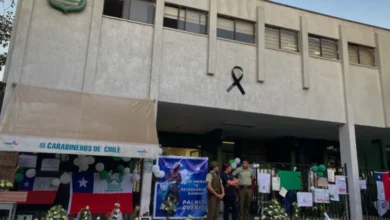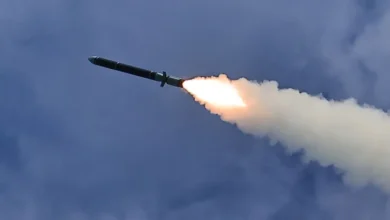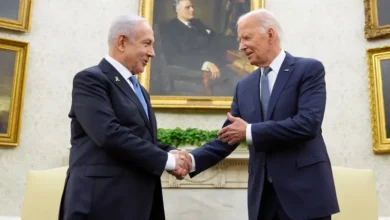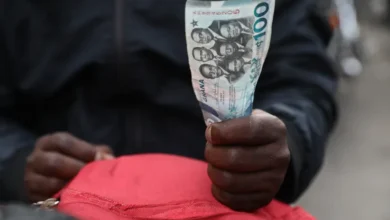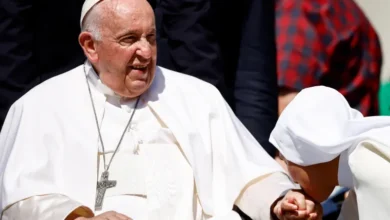Will Paul Kagame win a landslide in Rwanda election? Here’s what to know

After a low-key election campaign that featured just two parties, 9.7 million Rwandans are eligible to vote next week to choose a president and members of parliament who will serve for the next five years.
President Paul Kagame, who has led the country for the 30 years since the 1994 genocide, is largely unchallenged and is expected to once again win the election.
Despite polling dismally in the last presidential election, two opposition candidates with little support and weak campaign structures are again facing off against Kagame and his ruling Rwandan Patriotic Front (RPF) coalition. Several other candidates were barred from running.
The vote is being held amid escalating tensions between Rwanda and the neighbouring Democratic Republic of the Congo (DRC). Kinshasa accuses Kigali of sponsoring the M23 rebel group, which is waging war in the eastern DRC. Kigali denies this.
Voting is also taking place after an asylum seeker deportation deal that Kagame’s government has pursued with the United Kingdom collapsed. After the Labour Party won UK elections last week, new Prime Minster Keir Starmer announcing that the agreement would be scrapped.
Paul Kagame, 66
The incumbent is the favourite to win what would be his fourth term in office under the banner of the dominant RPF. Kagame first came to power after leading the rebel, Tutsi-led Rwandan Patriotic Forces, which seized power from the Hutu government, effectively ending the 1994 genocide that killed 800,000 to one million Tutsis and moderate Hutus. Kagame was considered the de facto leader as vice president from 1994 until 2000 when he officially became president.
He has since won by a landslide in three elections that rights groups and observers said were not fair. In the last one in 2017, the vote count gave him more than 98 percent of the ballots. Although a previous constitutional clause barred him from running more than twice, Rwandans voted in a 2015 referendum to lift those limits, paving the way for Kagame to remain in power until 2034. The referendum also shortened presidential terms from seven to five years.
Kagame’s rule has been criticised by rights groups as “autocratic”. His is accused of muzzling speech and stifling political competition. Despite this reputation, the president continues to enjoy popular support.
The president’s supporters alleged some Western media outlets are waging a campaign to discredit Kagame and dismiss Rwanda’s gains under him, pointing to the country’s efforts to attract foreign visitors as an example of its transparency and openness to the world.
“Would a country that has so much to hide, a country where citizens live in fear of a repressive regime and are routinely subjected to violence, try so hard to attract as many foreign visitors and permanent residents as possible?” Gatete Nyiringabo Ruhumuliza, a Kigali-based political analyst, lawyer and lobbyist, asked in a recent opinion piece for Al Jazeera. “Of course not.”
Many supporters, including young Rwandans, see Kigali as a hero who almost single-handedly pushed the country out of its dark days and promoted reconciliation and stability. He is commended for steering development programmes that have seen Rwanda enjoy strong economic growth although it remains a low-income country. At huge, colourful rallies across the country, Kagame has promised to continue on that trajectory if elected.
Frank Habineza, 47
In a country where opposition politicians have been mysteriously killed or disappeared, Habineza says he is slowly trying to move the needle towards a more robust democracy. The longtime environmentalist is running for a second time under his Democratic Green Party of Rwanda despite receiving just 0.48 percent of the vote in the 2017 election. His party holds just two of 53 contestable seats in the Chamber of Deputies, Rwanda’s lower house of parliament.
Habineza entered politics and formed the Green Party in 2009. But it faced challenges to register as a party for years. In 2010, its deputy president, Andre Kagwa Rwisereka, was murdered. Habineza fled to Sweden, saying his life was also under threat. He returned in 2017 to stand in the election and was the favourite among diaspora voters. Habineza won a parliament seat in the 2018 elections along with another candidate from the Green Party, which became the first opposition party to break the RPF’s hold on the chamber.
In this campaign, Habineza is focusing on boosting water access and expanding mechanised farming in a country where 70 percent of the population is engaged in agriculture. In his muted campaign rallies, which have seen barely 100 people gather, he has also taken swipes at Kagame, saying Rwandans are tired of arbitrary detentions and a lack of free speech and free media.
Philippe Mpayimana, 54
Mpayimana also ran in the 2017 election. The former journalist, professor and author was one of millions who fled Rwanda during the genocide, ending up in France and Belgium, where he worked as a teacher for many years.
He also worked with NGOs helping Hutu refugees in the DRC.
As a newcomer who was little known in Rwanda, he won 0.7 percent of the vote in 2017. In 2018, he lost his bid for parliament. Mpayimana currently works as a civil servant in the Ministry of National Unity and Civic Engagement.
Mpayimana has in the past said the point of running despite his slim chances was to foster “political maturity” in the country. In his campaigns, small crowds have turned up. The politician has promised to reform the mining sector to benefit small-scale miners and to expand access to loans for university students.
How does voting work?
The vote will be held for three days starting on Sunday after a campaign that began on June 22. Results are expected by July 20.
On Sunday, Rwandans in the diaspora will vote at embassies and consulates.
On Monday, the main presidential and legislative votes will be held. The winner of the presidential vote will be declared based on a simple majority vote.
Voters will also choose representatives in the 80-seat Chamber of Deputies. On this day, 589 candidates will compete for 53 of those seats. The RPF currently dominates the chamber with 41 seats. The RPF-allied Social Democratic Party has five seats while the opposition Liberal Party has four.
Quota-based elections for the remaining lower house seats will be held on Tuesday. Provincial councils elect women, youth and the disabled to fill 27 seats. This quota system contributes to making Rwanda one of the most gender-equal governments in the world.
Who was barred?
Eight candidates filed to run, but several were barred by courts or the National Electoral Commission. They included:
- Victoire Inagbire, 55: The opposition Democracy and Liberty For All candidate was barred by a court in March over a previous conviction. Inagbire, a fierce Kagame critic, served eight years in prison from 2010 to 2018 for threatening state security and “belittling” genocide after she questioned why a memorial in Kigali did not honour Hutu victims of the genocide. People who have served more than six months in jail are not eligible to run for president. Inagbire denounced the decision and said it was politically motivated.
- Diane Rigwara, 42: The National Electoral Commission rejected Rigwara’s candidacy for failing to obtain 600 endorsements from citizens – one of the requirements for running. The commission also said Rigwara, a member of the People Salvation Movement, failed to provide correct documentation showing she had been imprisoned. The high-profile Kagame critic was barred from the 2017 election on allegations of forging citizen signatures. She was then jailed for forgery and inciting insurrection before being acquitted in 2018.
- Bernard Ntaganda, 57: The leader of the Social Party was also barred over a previous conviction. In 2010, he was arrested and sentenced to a four-year term for “threatening state security, inciting ethnic divisions and planning unauthorised demonstrations”.
What are the key issues?
Rising cost of living
Kagame is credited with steering the economy to strong growth that boosted living standards after the genocide. Rwanda’s gross domestic product (GDP) growth is one of the best in Africa at about 7 percent annually in the past two decades, compared with a continental average of 3.5 percent. That growth is driven by the mining of gold and other precious metals, coffee and tea exports, and tourism.
However, there is still a significant level of poverty, particularly in rural areas outside Kigali, with many people lacking access to basic services like electricity and water. Poverty reduction has stagnated in recent years, and youth unemployment stands at 16 percent in a country where nearly half of the population is under 24.
About 49 percent of the population was living on less than $2.15 a day in 2020, according to the United Nations Development Programme. That’s higher than the sub-Saharan African average of 28 percent. COVID-19 pressures pushed 550,000 more people across the poverty line according to the World Bank. Additionally, supply chain disruptions from the Russia-Ukraine war have hit an import-reliant Rwanda hard.
Kagame’s biggest challenge at the moment is keeping food inflation low. Rwanda, which is also reliant on external borrowing, is seeing its debts pile up. Its debt represented 71 percent of its GDP by 2020, up from 19 percent in 2010.
Food security
About 70 percent of the population is reliant on subsistence farming for food. Being one of the most densely populated African countries with a 13 million population, access to land for cultivation is a big issue.
Added to that are weather and climate factors that cause irregular rainfall, drought, floods, pests and disease, all of which can impact food production.
Habineza has made food security a cornerstone of his campaigns. He has touted strengthening rainwater harvesting techniques to get through dry seasons and provide access to clean water. He has also campaigned against using artificial fertilisers and pesticides.
